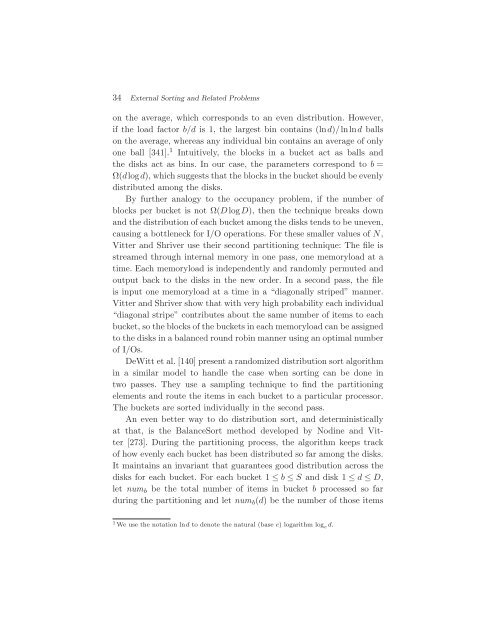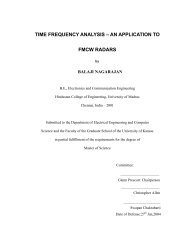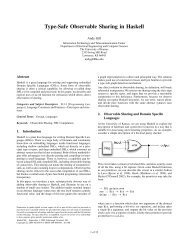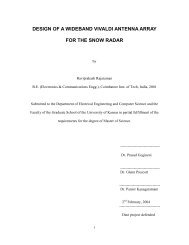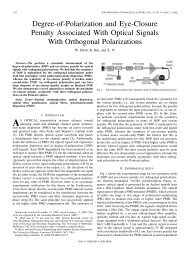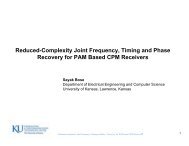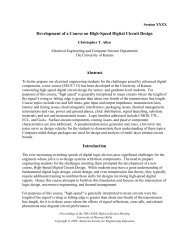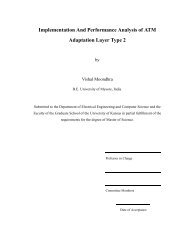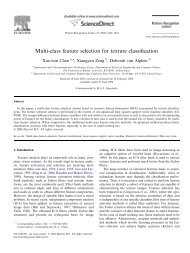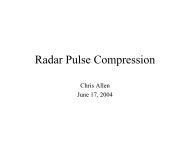Algorithms and Data Structures for External Memory
Algorithms and Data Structures for External Memory
Algorithms and Data Structures for External Memory
You also want an ePaper? Increase the reach of your titles
YUMPU automatically turns print PDFs into web optimized ePapers that Google loves.
34 <strong>External</strong> Sorting <strong>and</strong> Related Problems<br />
on the average, which corresponds to an even distribution. However,<br />
if the load factor b/d is 1, the largest bin contains (lnd)/lnlnd balls<br />
on the average, whereas any individual bin contains an average of only<br />
one ball [341]. 1 Intuitively, the blocks in a bucket act as balls <strong>and</strong><br />
the disks act as bins. In our case, the parameters correspond to b =<br />
Ω(dlogd), which suggests that the blocks in the bucket should be evenly<br />
distributed among the disks.<br />
By further analogy to the occupancy problem, if the number of<br />
blocks per bucket is not Ω(D logD), then the technique breaks down<br />
<strong>and</strong> the distribution of each bucket among the disks tends to be uneven,<br />
causing a bottleneck <strong>for</strong> I/O operations. For these smaller values of N,<br />
Vitter <strong>and</strong> Shriver use their second partitioning technique: The file is<br />
streamed through internal memory in one pass, one memoryload at a<br />
time. Each memoryload is independently <strong>and</strong> r<strong>and</strong>omly permuted <strong>and</strong><br />
output back to the disks in the new order. In a second pass, the file<br />
is input one memoryload at a time in a “diagonally striped” manner.<br />
Vitter <strong>and</strong> Shriver show that with very high probability each individual<br />
“diagonal stripe” contributes about the same number of items to each<br />
bucket, so the blocks of the buckets in each memoryload can be assigned<br />
to the disks in a balanced round robin manner using an optimal number<br />
of I/Os.<br />
DeWitt et al. [140] present a r<strong>and</strong>omized distribution sort algorithm<br />
in a similar model to h<strong>and</strong>le the case when sorting can be done in<br />
two passes. They use a sampling technique to find the partitioning<br />
elements <strong>and</strong> route the items in each bucket to a particular processor.<br />
The buckets are sorted individually in the second pass.<br />
An even better way to do distribution sort, <strong>and</strong> deterministically<br />
at that, is the BalanceSort method developed by Nodine <strong>and</strong> Vitter<br />
[273]. During the partitioning process, the algorithm keeps track<br />
of how evenly each bucket has been distributed so far among the disks.<br />
It maintains an invariant that guarantees good distribution across the<br />
disks <strong>for</strong> each bucket. For each bucket 1 ≤ b ≤ S <strong>and</strong> disk 1 ≤ d ≤ D,<br />
let numb be the total number of items in bucket b processed so far<br />
during the partitioning <strong>and</strong> let numb(d) be the number of those items<br />
1 We use the notation lnd to denote the natural (base e) logarithm loge d.


